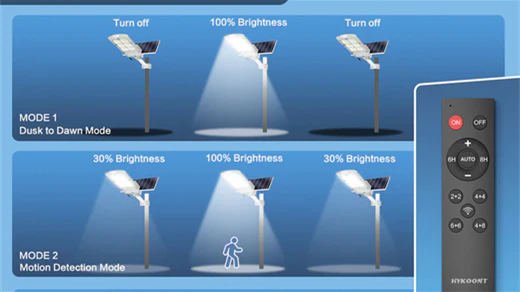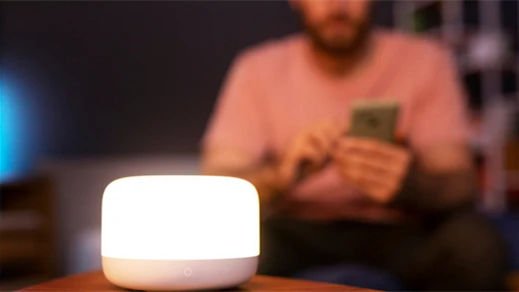Dusk to dawn lights, also known as photocell lights, are outdoor lighting fixtures designed to automatically turn on at dusk and off at dawn, providing illumination throughout the night. In this blog post, we'll explore the technology and craftsmanship behind Dusk to dawn lights, delve into how they achieve the dusk-to-dawn functionality, discuss testing methods for users, and evaluate the pros and cons of these lighting solutions.
1. Technology and Craftsmanship
Dusk to dawn lights typically consist of a light fixture integrated with a photocell sensor,which is a combination of advanced technology and meticulous craftsmanship to achieve their functionality and durability. The key elements encompassed in the technology and craftsmanship of Dusk to dawn lights include:
- Photocell Sensor Technology: Central to the operation of Dusk to dawn lights is the utilization of photocell sensor technology. These sensors, typically composed of semiconductor materials such as cadmium sulfide (CdS), possess the ability to detect changes in ambient light levels. As daylight transitions to darkness, the photocell sensor's sensitivity enables it to trigger the activation of the light fixture.
- Weather-Resistant Construction: Dusk to dawn lights are engineered with weather-resistant materials and construction to withstand outdoor conditions and ensure long-term performance. The housing of the light fixture is often crafted from durable materials such as aluminum or polymer plastics, providing protection against moisture, UV radiation, and temperature variations.
- Sealed Electrical Components: To safeguard the internal electrical components from environmental elements, Dusk to dawn lights feature sealed enclosures or gaskets that prevent water ingress and corrosion. This enhances the reliability and longevity of the electrical circuitry, ensuring consistent operation in diverse weather conditions.
- Precision Engineering: The design and assembly of Dusk to dawn lights involve precision engineering techniques to optimize performance and functionality. Components such as the photocell sensor, light-emitting diodes (LEDs), and electrical contacts are carefully integrated and calibrated to deliver efficient and reliable operation.
- Energy-Efficient Lighting Technology: Many modern Dusk to dawn lights utilize energy-efficient LED technology to provide illumination while minimizing energy consumption. LEDs offer several advantages, including longevity, low power consumption, and the ability to produce bright, directional light with minimal heat generation.
- User-Friendly Installation: Dusk to dawn lights are designed for easy installation, with features such as adjustable mounting brackets, plug-and-play wiring connectors, and intuitive setup instructions. This simplifies the process of mounting the light fixture on various outdoor surfaces and connecting it to the electrical supply.

2. Implementation of Dusk-to-Dawn Functionality
Dusk to dawn lights are designed with built-in sensors that enable them to automatically detect changes in ambient light levels and adjust their operation accordingly. The key components involved in implementing the dusk-to-dawn functionality include:
- Photocell Sensor: At the core of Dusk to dawn lights is the photocell sensor, also known as a photoresistor or light-dependent resistor (LDR). This sensor is typically positioned on the light fixture in a location where it can directly detect ambient light levels. The sensitivity of the photocell sensor allows it to distinguish between daylight and darkness.
- Electrical Circuitry: The photocell sensor is integrated into the electrical circuitry of the light fixture. When exposed to sufficient ambient light levels during the day, the photocell sensor's resistance decreases, allowing current to flow through the circuit. This keeps the light fixture switched off during daylight hours to conserve energy.
- Automatic Switching Mechanism: As daylight fades and ambient light levels decrease in the evening, the resistance of the photocell sensor increases. Once the ambient light level drops below a certain threshold, the increased resistance prevents the flow of current through the circuit. This triggers the automatic switching mechanism, causing the light fixture to turn on and provide illumination during the night.
- Dawn Activation: At dawn, as daylight begins to increase and ambient light levels rise, the resistance of the photocell sensor decreases once again. When the ambient light level surpasses the threshold, the photocell sensor's reduced resistance allows current to flow through the circuit, signaling the automatic switching mechanism to turn off the light fixture.

3. Testing Dusk to dawn lights
Users can test the functionality of Dusk to dawn lights by following these steps:
- Cover the Photocell: To simulate darkness, cover the photocell sensor with opaque material such as tape or cloth.
- Observe Light Activation: With the photocell covered, wait for a few minutes until the light fixture detects the simulated darkness and turns on.
- Uncover the Photocell: Remove the covering from the photocell sensor to expose it to ambient light.
- Observe Light Deactivation: As ambient light increases, observe the light fixture turning off in response to the photocell sensor's detection of dawn.
Testing Dusk to dawn lights periodically ensures proper functionality and identifies any issues that may require maintenance or replacement of the photocell sensor or light fixture.

4. Pros and Cons
Pros:
- Energy Efficiency: Dusk to dawn lights only operate during nighttime hours, minimizing energy consumption and reducing electricity costs.
- Convenience: Automated operation eliminates the need for manual switching, providing hassle-free illumination without user intervention.
- Safety and Security: Continuous nighttime illumination enhances safety by illuminating pathways, driveways, and outdoor spaces, while also deterring intruders.
Cons:
- Limited Control: Dusk to dawn lights operate solely based on ambient light levels, offering limited control over lighting schedules or intensity.
- Photocell Sensitivity: Environmental factors such as shadows, foliage, or artificial light sources may affect the sensitivity and reliability of photocell sensors, leading to false activations or deactivations.
- Maintenance Requirements: Over time, photocell sensors may degrade or malfunction due to exposure to weather conditions, requiring periodic inspection and potential replacement.

Conclusion
In conclusion, Dusk to dawn lights offer a convenient and energy-efficient solution for outdoor illumination, leveraging photocell technology to automate lighting based on ambient light levels. By understanding their technology, testing methods, and evaluating their pros and cons, users can make informed decisions regarding the implementation and utilization of Dusk to dawn lights in their outdoor spaces.


































Leave a comment
This site is protected by hCaptcha and the hCaptcha Privacy Policy and Terms of Service apply.